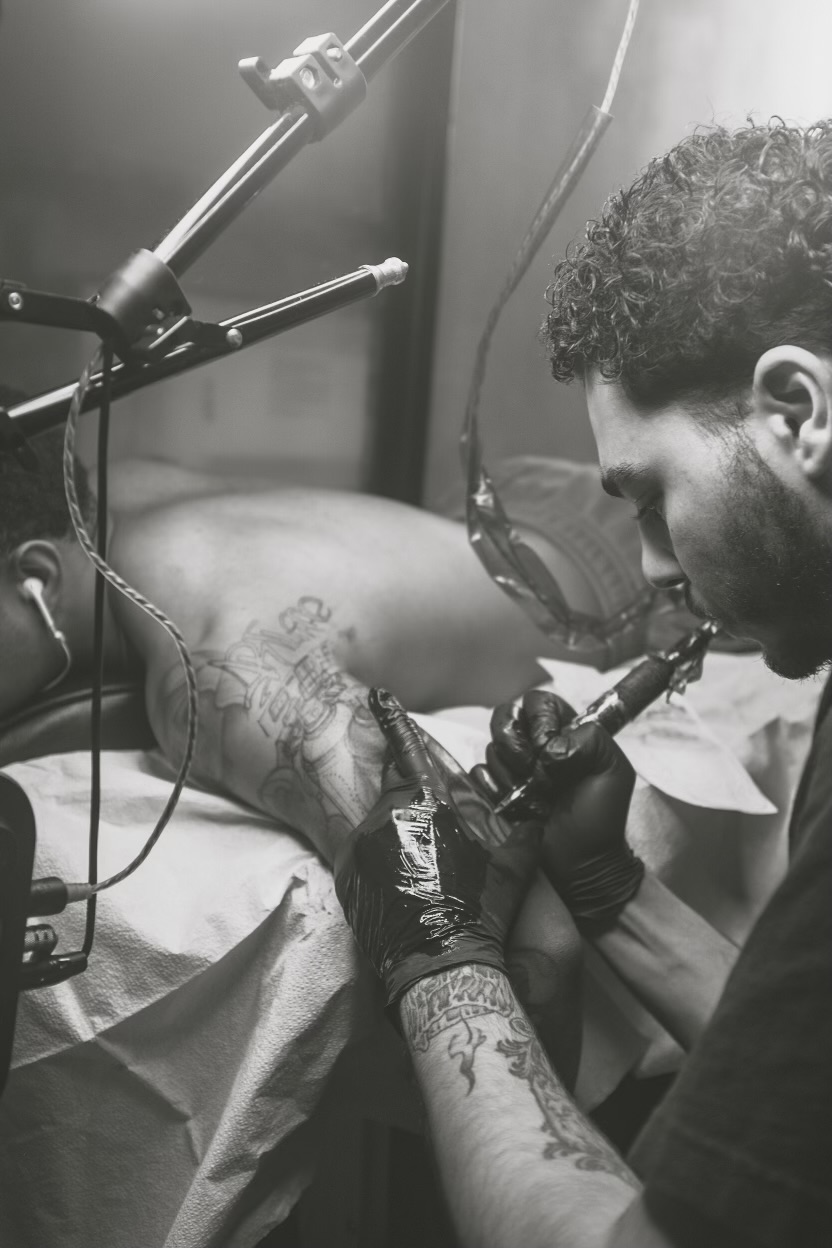We’re excited to introduce you to the always interesting and insightful Ikaika Padron-Haakenson. We hope you’ll enjoy our conversation with Ikaika below.
Alright, Ikaika thanks for taking the time to share your stories and insights with us today. What do you think matters most in terms of achieving success?
Honestly? It takes way more than just being good at drawing. I mean, yeah your linework, shading, and technique have to be solid. But beyond that, it’s about consistency, showing up even when you’re tired, and building real trust with your clients.
Tattooing is so personal someone’s trusting you with their skin, sometimes with something deeply emotional so being a good artist also means being a good listener. You have to know when to give advice, when to hype them up, and when to just be silent and focused.
There’s also the hustle side of it. You’re not just tattooing you’re managing bookings, making content, answering DMs, staying up late designing customs. You have to treat it like a business and an art form. Social media is huge now too. If you want to grow, you need to learn how to market yourself without losing what makes you you.
And most of all, patience. You don’t wake up with a booked out calendar and 100k followers. You have to keep going even when no one’s watching, even when you’re questioning if it’s working. Success in this industry is about staying committed to your craft and never getting too comfortable.
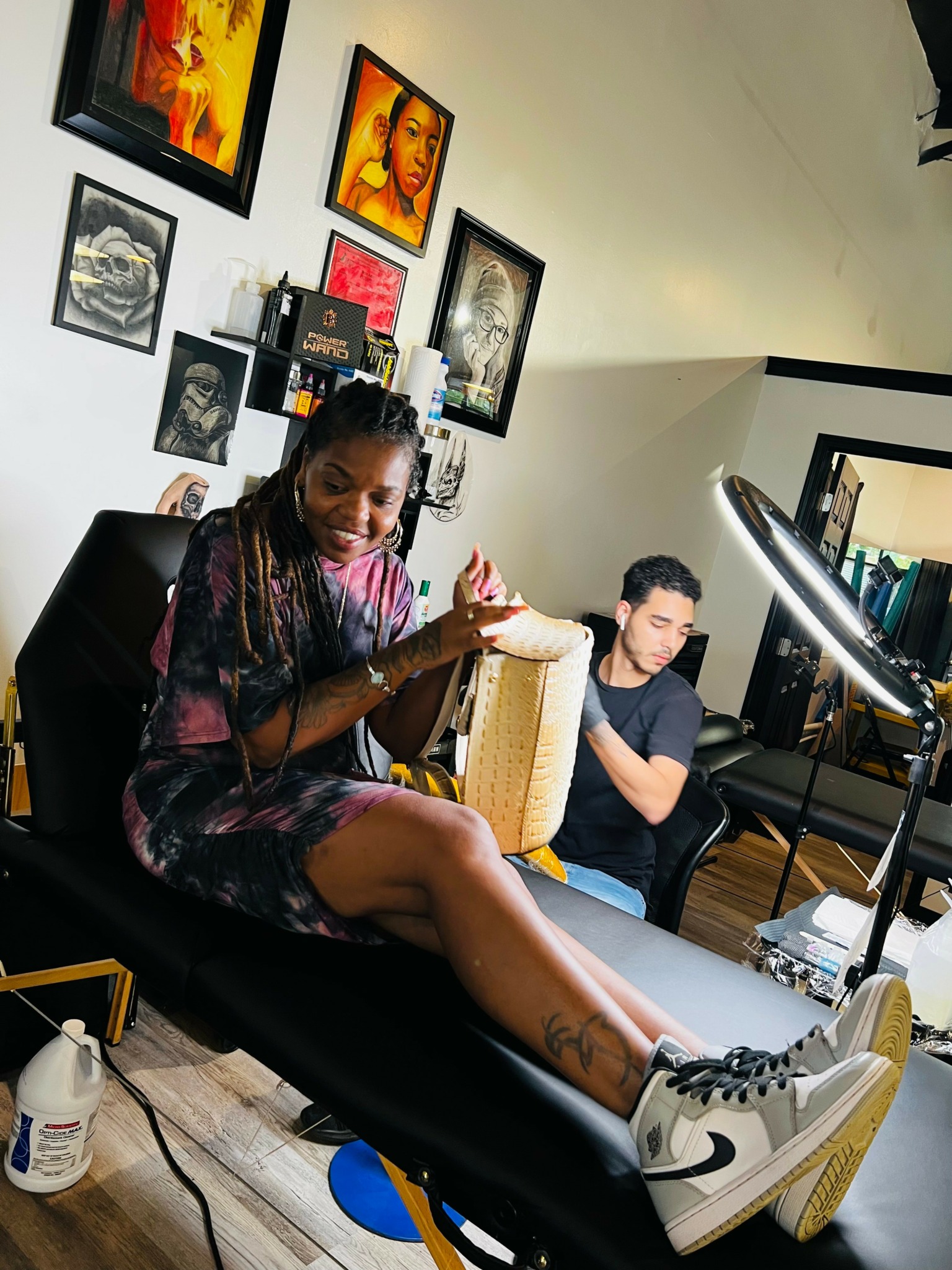
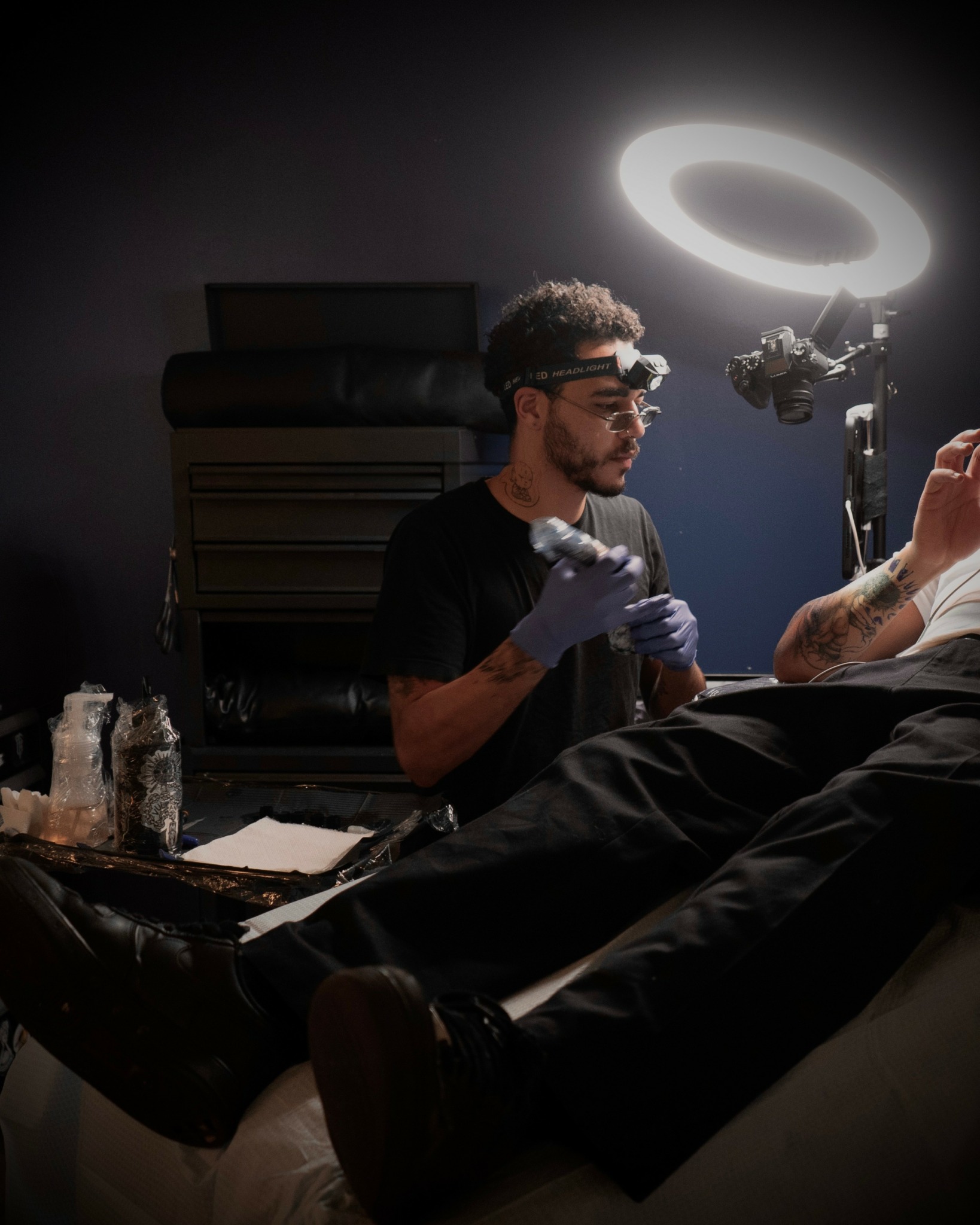
Great, appreciate you sharing that with us. Before we ask you to share more of your insights, can you take a moment to introduce yourself and how you got to where you are today to our readers.
I’m a tattoo artist who believes tattoos should feel just as intentional as they look. I got into tattooing from a love of art, sure, but also from a real desire to help people feel seen, powerful, and proud in their own skin. I didn’t take the most traditional path, it started with sketchbooks full of drawings and eventually turned into me pouring everything I had into mastering the craft. That meant late nights, unpaid hours, and just nonstop learning.
My work leans heavily into clean linework with a focus on custom pieces that feel personal to the client. I don’t really do flash for the sake of doing flash — I’d rather sit with you, hear your story or vibe, and build something meaningful. I work with all skin tones, all body types, and all walks of life, and I make sure that every person who sits in my chair feels comfortable and respected. That’s really important to me.
I think what sets me apart is how much intention goes into the process. It’s not just about what the tattoo looks like it’s about how the person feels during and after. I’m big on making the experience collaborative. I don’t want clients to feel like they’re just picking something and hoping it turns out cool I want them to feel like they were a part of creating something timeless.
I’m most proud of the relationships I’ve built through my work. Whether it’s a first-timer who’s nervous or someone coming in to mark a huge life event people trust me with their stories, and that never stops being an honor.
If there’s one thing I’d want people to know about me and my brand, it’s that I’m here to create with care. Tattoos can be healing, transformative, rebellious, or just straight-up fun whatever the reason, I’m all in. I just want people to walk away with something they love forever, and to feel like they were fully seen in the process.
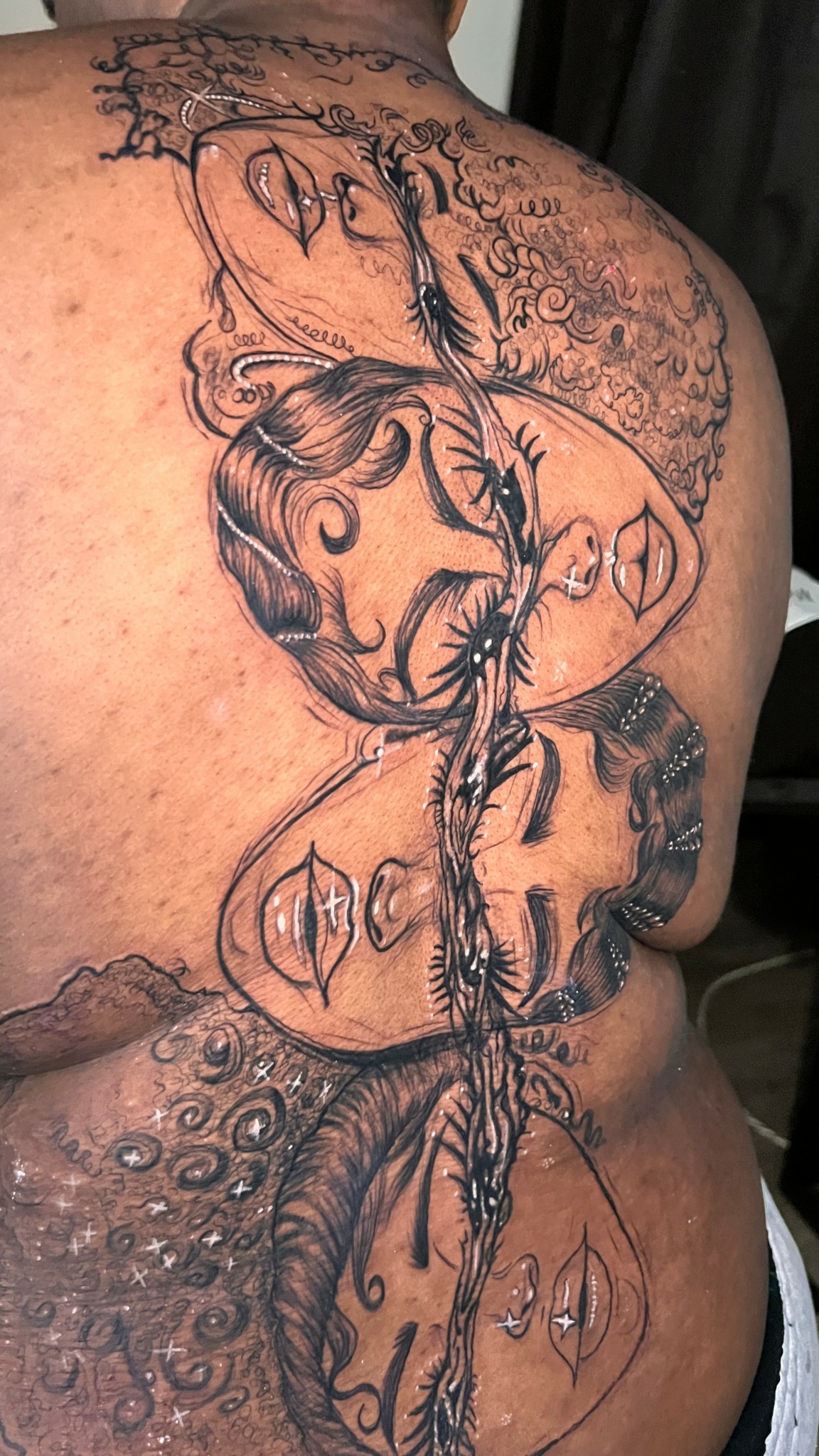
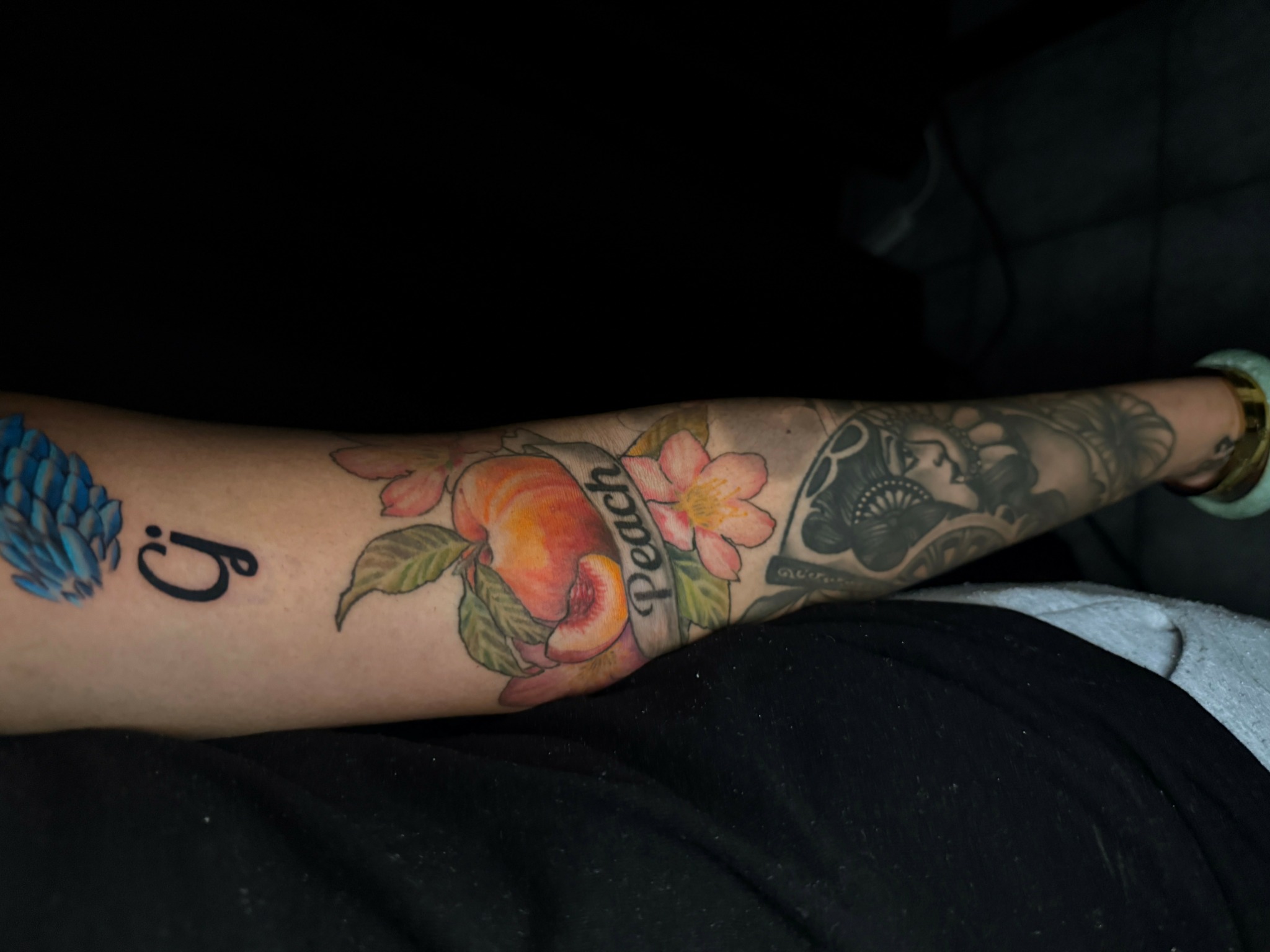
Is there something you think non-creatives will struggle to understand about your journey as a creative? Maybe you can provide some insight – you never know who might benefit from the enlightenment.
Absolutely. I think one of the biggest misconceptions is that being a creative — especially if you’re trying to do it full-time — is just about the fun stuff. People imagine it’s all sketching, painting, tattooing, or designing all day. But what they don’t see is the amount of non-creative work that goes into making the creative part even possible.
If you want this to be your career, not just a hobby, you end up wearing a hundred different hats. You’re doing admin work, setting up booking systems, replying to DMs, scheduling, managing cancellations, handling deposits, tracking income and expenses, keeping up with taxes — and then there’s marketing. Social media isn’t just a bonus, it’s a lifeline. You have to constantly study trends, create content, stay consistent, and figure out what connects with your audience — all while trying not to burn out.
The actual creative part — like drawing or tattooing — becomes the reward at the end of everything else. It’s the part I love most, but in reality, it’s just one piece of the puzzle. The business side is very real. And if you’re not ready to treat it like a job, it’s hard to survive off of your art.
I think non-creatives would be surprised at how much structure, discipline, and behind-the-scenes effort it really takes to sustain a creative career.
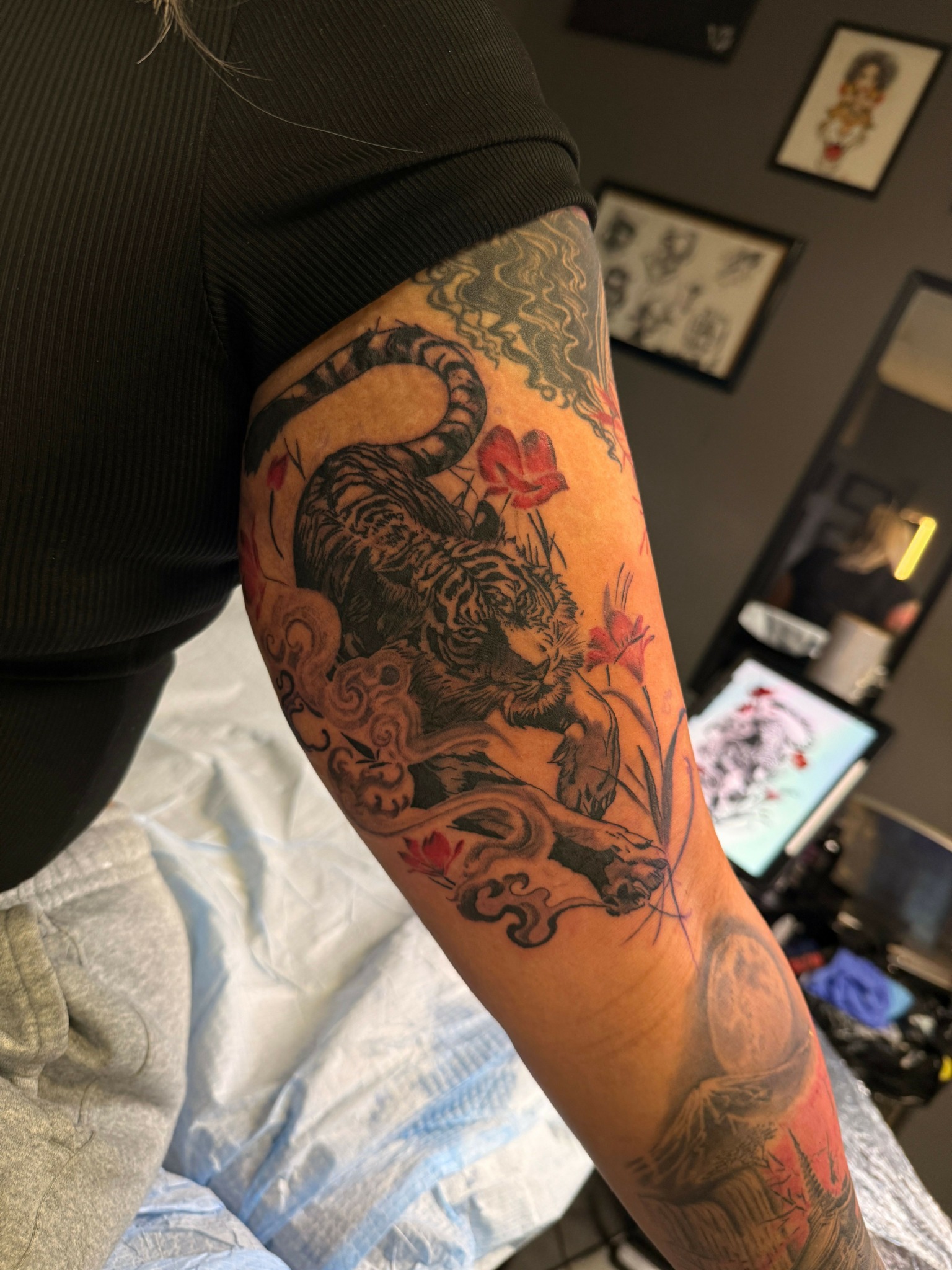

Have any books or other resources had a big impact on you?
Definitely. There are a handful of books that made a huge impact on me, especially early in my career when I was trying to balance honing my craft with learning how to run my business. One of the first that really stuck with me was Bushido: The Legacy of the Japanese Tattoo by Takahiro Kitamura. It doesn’t just showcase incredible artwork it dives into the cultural depth and history behind Japanese tattooing, which really grounded my passion in something meaningful.
Another great one is Japanese Tattoos: Meanings, Shapes and Motifs by Yori Moriarty. That book helped me connect more deeply with the symbolism in the designs and gave me a greater sense of respect for the tradition behind the imagery I love to work with. Those resources helped me not just as a tattooer, but as someone who wants to carry this style with understanding, not just aesthetic.
On the technical and artistic side, Drawing the Head and Figure by Jack Hamm and The Artist’s Complete Guide to Drawing the Head by William A. Maughan were essentials for developing drawing fundamentals. Same goes for Anatomy and Perspective: The Fundamentals of Figure Drawing by Charles Oliver they teach structure, form, and technique, not just how to copy what you see.
If I were in piercing, The Piercing Bible would be my go-to. It’s a strong foundational resource that treats the craft with professionalism and care.
As far as mindset and entrepreneurship, I really respect Dan Koe. His podcast is incredible. He goes deep into creative entrepreneurship how to build systems, structure your life, and maintain focus. That’s something I’ve talked about before: creativity isn’t just the “fun” part. You need strategy, consistency, and structure to make your art sustainable, and Dan Koe really breaks that down in a way that’s honest and actionable.
All these resources helped me fall in love with the craft, not just the trend and gave me the tools and mindset to build a career with depth and direction.
Contact Info:
- Website: https://Kaitattoosatl.com
- Instagram: @kai.tattoos
- Youtube: https://youtube.com/@blackfiretattoos?si=ToSkMlDi1DQgLsbq
- Other: TikTok: @kai.tattoos
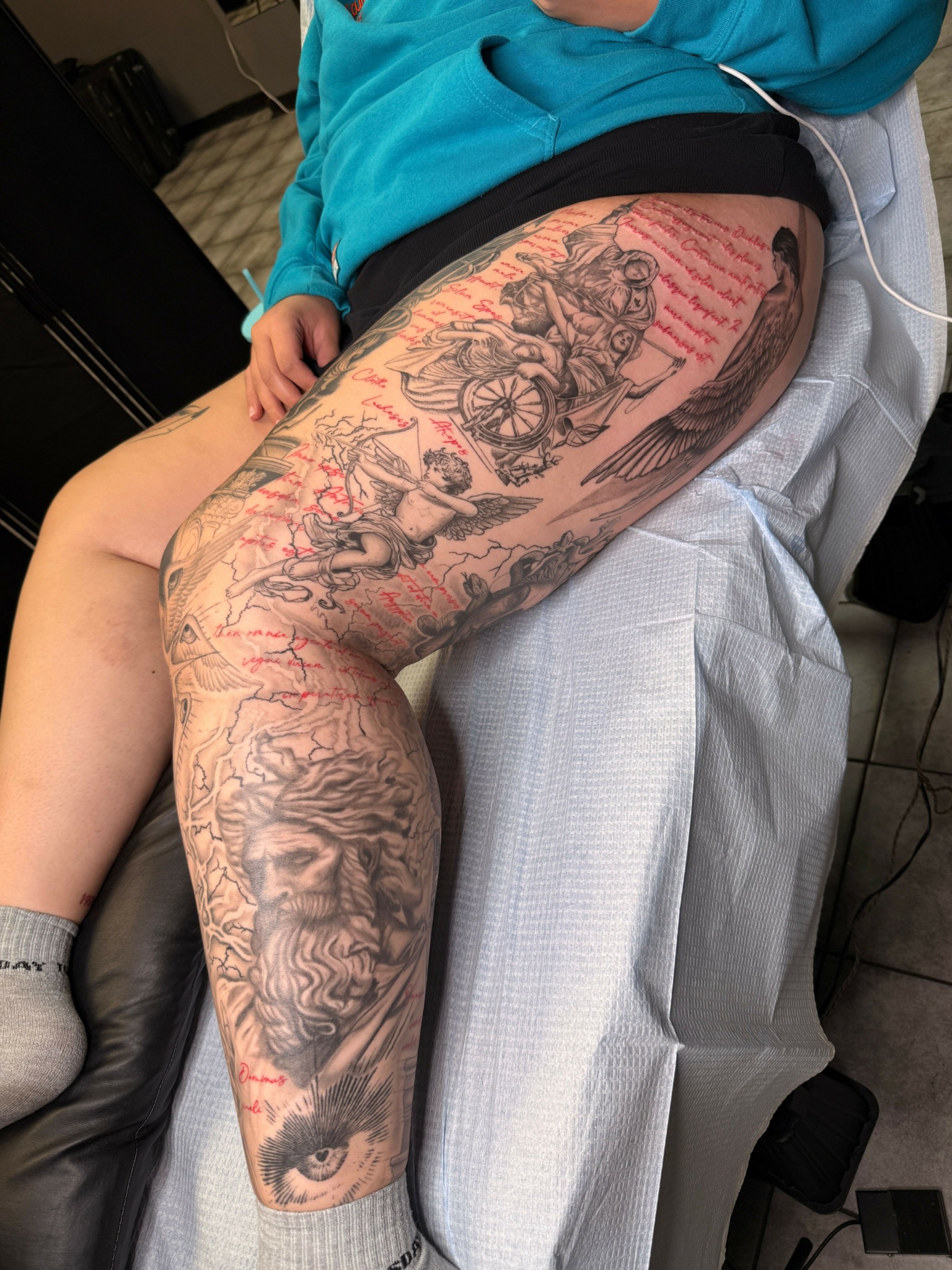
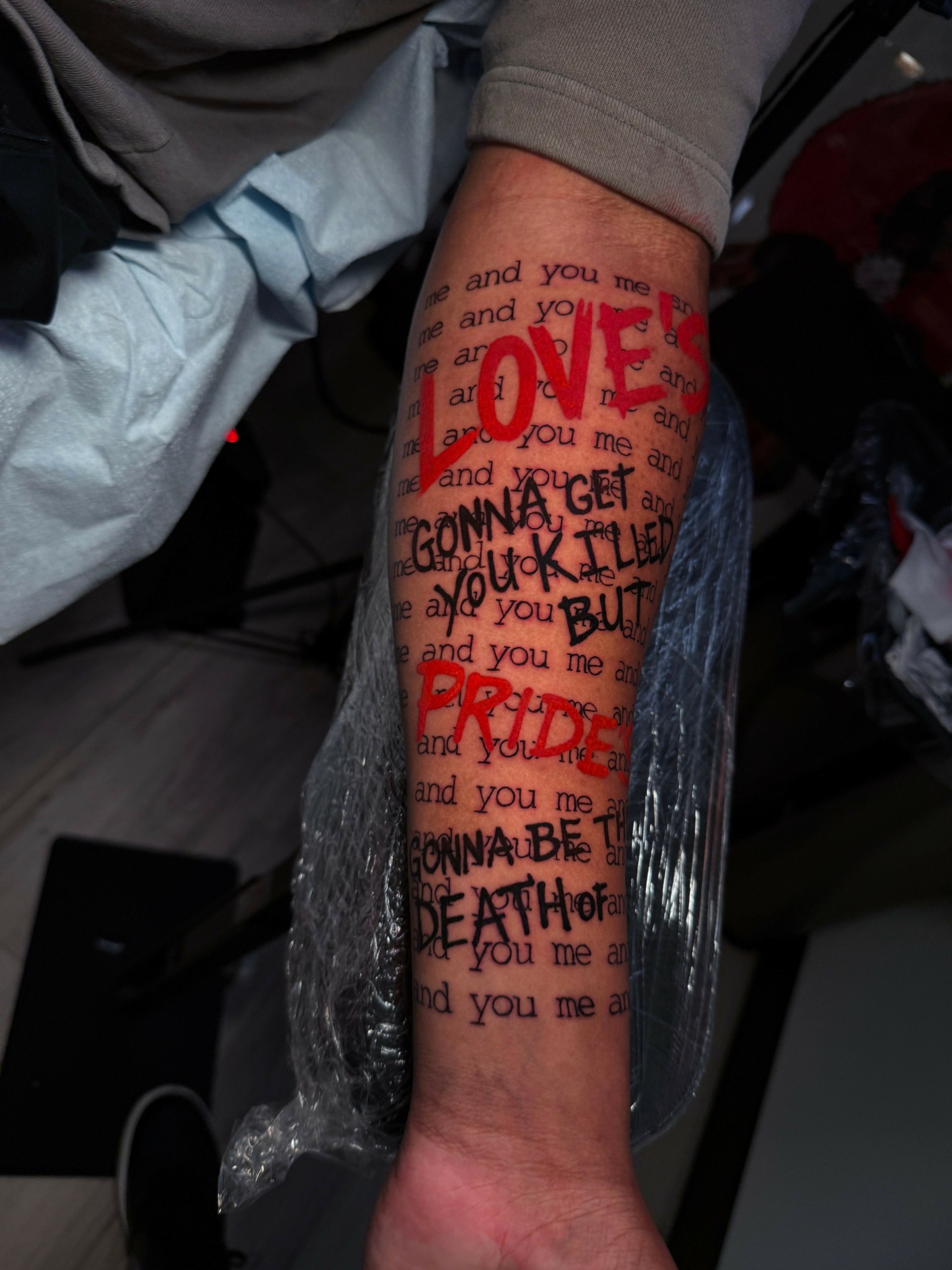
Image Credits
Robert Henry | Photographer and Videographer


